Have you ever felt overwhelmed by the sheer volume of messages in your inbox? Of course, it’s great...
Why Customer Experience Will Be The Deciding Factor for Your Brand
Customer experience wasn’t always the trendy topic it is today. Brands typically prioritized competitive pricing and product development over the actual experience of their customers.
But the battle for sales, brand loyalty, and customer retention in 2021 and beyond will be won by businesses that take customer experience seriously and execute strategies that audiences connect with.
So, why is customer experience important all of a sudden?
Because consumers expect more from brands than ever before. With millions of brands vying for your attention, consumers are beginning to separate themselves from brands that put their experiences on the back burner.
Your brand’s customer experience can make customers feel valued, engaged, and eager to spend. But, if you can’t get it right, you’ll fall behind competitively to other brands. Let’s review why customer experience matters for your brand now and in the future.
Quick overview of Customer Experience
Customer experience (CX) is defined as the thoughts and feelings consumers have and the actions they take during interactions with your brand. This experience starts when people first hear about your company, continues throughout their customer journey, and extends past their purchase.
How customers perceive your brand and their experience can lead them to purchase, and repeat purchase, or stop doing business with your company altogether. In fact, 73% of people admit customer experience is an essential factor in their purchasing decisions. Yet only 49% of consumers say companies provide a good customer experience.
When each touchpoint shows customers that you care about their time, money, and overall experience, your brand will be more efficient at driving loyalty and inspiring customers to share their positive experiences with others.
How CX differs from customer service
Customer experience encompasses someone’s entire journey with your brand, whereas customer service usually reflects a single touchpoint.
CX ripples across all areas of your business – from brand awareness, website design, shipping, email newsletters, social media, and more.
Customer experience includes customer service. Support is just one aspect of your customer’s overall experience with your brand, though it matters a great deal.
Your business can also have fantastic customer service and a poor customer experience.
For example, let’s say your spa business is great at answering phone calls and emails for customer support questions. This is great service.
However, at the same time, your customer experience can be miserable. Your website is confusing to navigate. Your online scheduling experience is glitchy and non-intuitive. Your POS system is outdated. Your facialists are routinely late for their appointments.
The experience becomes so cumbersome for the customer, that they’ll search for the next best spa on Google – regardless of how good your customer service is.
Why Customer Experience matters
SuperOffice, a cloud CRM platform, recently surveyed 1,920 business professionals about their top priorities in the next five years. More than 45% answered “customer experience,” beating out product (33.6%) and pricing (20.5%).
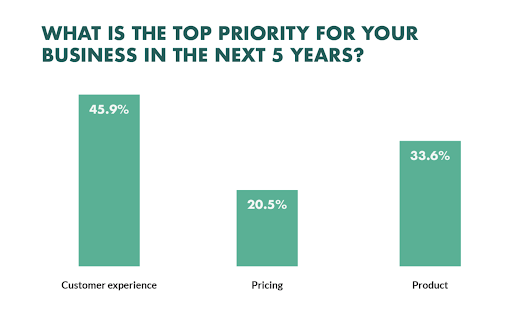
What’s causing this shift toward better customer experiences? Why are customers pickier now than ever before? Let’s review:
Customers today are more tech-savvy and well-researched before making buying decisions. It’s become the norm to shop around and read reviews before pulling the trigger. While multiple brands may have similar products and price points, only one will speak to them to earn their trust and the sale.
Buyers want to know who’s behind the products, what the company stands for, and that it sees, hears, and appreciates its customers.
82% of US customers want and seek out brands offering a human touch. They’re looking for brands to foster authentic connections and use technology to help personalize a seamless, enjoyable experience. Companies should understand them and their needs at every touchpoint. And doing so will actually benefit your bottom line.
Customers will pay more for a better experience
Stats show that 42% of customers will pay more for a friendly, more welcoming customer experience. And the more expensive the product or service, the more customers are willing to pay for better CX:
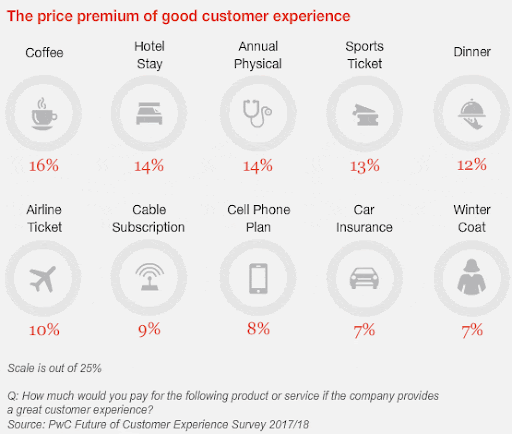
Source: Customer experience is everything, PwC
Consumers value a great customer experience because it generally means they’ll have to deal with less friction and frustration, score more convenience, and, ultimately, have less buyer’s remorse.
You’ll boost customer satisfaction and reduce churn
Happy customers tend to stick around, especially after they’ve done the legwork to research your company and compare your price, product, and CX. They’ll be less likely to churn – canceling their subscriptions and ending their contracts – if you continue to provide the CX that attracted them in the first place.
According to Gartner, customer experience drives over 60% of brand loyalty, more than price and product combined. Your sales team will thank you for creating loyal customers, as they know how deflating it can be to see their accounts walk out the door for a competitive brand.
Related: Your sales team has just as much of a responsibility for creating a great customer experience – and this is true even after the sale. This is why they should practice relationship selling rather than looking at each account as just another dollar sign.
Word of mouth outreach increases brand awareness
Pleased, loyal customers will become your company’s best brand ambassadors. These customers will leave good reviews about your products, share their positive customer experiences on social media, and tell all their friends, family, and coworkers about your company in person.
In fact, 71% of people recommend a product or service because they received a “great” customer experience.
So now that you know why you must up your CX game to gain a competitive edge and build a tribe of amplifiers, let’s talk strategies.
How to improve your customer experience
By now we know that most companies aren’t walking the walk when they say they prioritize customer experience in their strategy. In this section, I’ll discuss five ways for improving the experiences you provide.
Adopt a CX-focused mindset
Who’s responsible for customer experiences at your company? Is it Marketing’s job to pitch the right messages? Your digital team for ensuring your mobile site is up to par?
HubSpot wrote an entire report on The Rise of the Chief Customer Officer (CCO) in Australia, emphasizing how companies are hiring and developing executives whose sole responsibility is getting CX right.
How you choose to assign CX is totally dependent on your organization’s structure and your team’s capacity. But the first step in your strategy is developing a clear, CX-focused vision your entire team can get on board with.
To Do: Write out your guiding principles for how you want your customers to connect, feel, think about, and engage with your brand. What does your target audience value most? What would win them over if you were making friends? From there, you can map out a workflow for implementing CX.
The principles you establish in this process should carry throughout every department and interaction customers have with your brand.
Understand your target audience
A whopping 66% of consumers expect companies to understand their needs. So you need to know exactly what they’re looking for across their entire journey with your brand and personalize the experience just for them.
Investing time to create detailed buyer personas and map out your customer journeys will pay off, as customers will feel the personalization.
To Do: Segment your customer base and create detailed buyer personas/customer profiles that describe your target audience. This will help you understand where they’re coming from, their buying behavior, and what they need from your brand throughout their journey and across all your channels.
Let a customer relationship management tool do all the heavy lifting here. It can help you grow your business with deep customer connections, track every customer interaction, give your agents intelligent conversation suggestions, and send automatic personalized messages at just the right time.
Capture customer feedback
When Bain & Company polled organizations about their CX, 80% believed they were delivering a high-quality experience. However, when B&C surveyed these organizations’ customers, only 8% said they agreed.
To minimize this type of disconnect, you should keep your ear to the ground and listen to what your customers and prospects have to say. This starts by gathering feedback.
To Do: Always ask for feedback – and actually act upon it. Your brand can:
- Collect reviews to see what real customers have to say about your products or service. Both positive and negative feedback can be extremely helpful for your marketing, sales, and even product teams.
- Use live chat tools to initiate real-time conversations about how customers are using/liking/disliking your website. You can ask what they came for or what they need help with to grab visitor data.
- Use a phone system to listen in on customer or prospect conversations. You can even pull call recordings for up to six months, replay those recordings, and take notes on common patterns showing up in these conversations. For example, if you notice customers really enjoy a certain feature, take that and start highlighting it on your website.
- Create and send surveys to hear honest feedback from your followers after key interactions. You’ll be able to get quantitative feedback like Customer Service Satisfaction (CSAT) and Net Promoter Score (NPS).
Once your team collects and analyzes your customer feedback, you’ll have a better idea of what needs improving and what’s actually working.
Prioritize a human, emotional connection
That PwC research from earlier in this article highlighted earlier a crucial point: 64% of consumers feel companies have lost touch with the human element of their customer experience. This is a problem.
How customers feel about your values, mission, and efforts to give back/make the world a better place inspires emotional responses. Once you make customers “feel” something, they form an attachment, which then affects their decision-making and how they perceive your customer experience.
In a Harvard Business Review study on customer emotions, researchers learned emotionally connected customers are more likely to recommend brands they care about, less likely to defect to a competitor, and 2.3 times more willing to pay a premium to brands providing a better customer experience.
To Do: There’s an old saying in sales that “people buy from people, not businesses.” So try to assess whether you’re reaching out to foster genuine human connections or simply hawking your wares. What can you do to show your brand’s human side?
Start investing in omnichannel
As stats from PWC’s 2020 report reveal, companies investing in an omnichannel experience jumped from 20% to more than 80%. These brands aim to provide a seamless customer experience across desktop sites, mobile, social media, live phone/online chat, and brick-and-mortar locations, and you should too.
To Do: The most common consumer complaints about website/mobile design include long load times, less-than-helpful site search, and poorly laid-out navigation. These issues all frustrate visitors, and if they can’t find what they’re looking for or connect with your brand, there’s no way they’ll have a positive customer experience. Upgrade these ASAP.
5 Real World Examples of Brands Crushing Customer Experience
These five brands understand the importance of CX, and each focuses on a different aspect of their customer’s journey. See if you can mimic what they’re doing for your brand:
1. Fender
Legendary guitar brand Fender learned that their target audience abandoned their instruments just one year after purchasing them. Careful not to let this negatively affect their customer satisfaction or loyalty scores, Fender created a subscription-based service to teach beginners how to play and fall in love with their products.
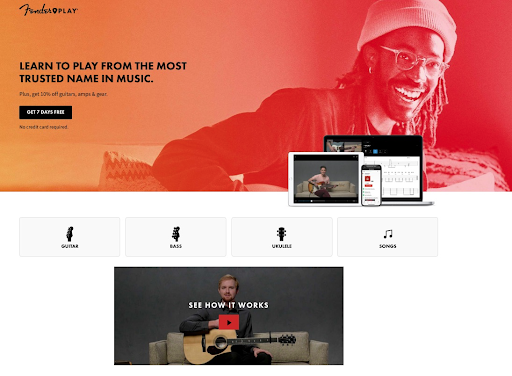
With step-by-step learning, easy-to-follow lesson plans, and progress tracking, the mobile and desktop app has over 100,000 active users and grossed nearly $500,000 in revenue. This kind of customer experience could last a lifetime.
2. Southwest Airlines
Southwest built its empire on making customers happy during what’s not always considered a fun experience (air travel). But The Southwest Travel Experience addresses the biggest traveler pain points, so the CX ensures satisfied, loyal customers.
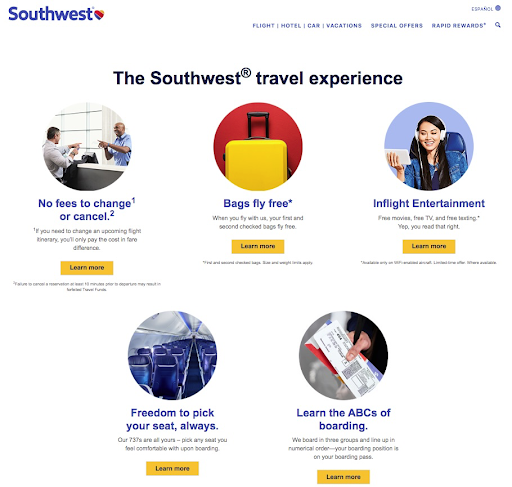
Southwest eliminated change/cancel and checked-bag fees, offers inflight entertainment to make the journey more delightful, and empowers customers to pick their seats and learn all about their boarding protocols on their own time. It’s no wonder so many Southwest customers refuse to travel any other way.
3. Pacifica Beauty
Clean, vegan, and cruelty-free beauty brand Pacifica prioritizes emotional connections during its customer journey. The company advocates a commitment to products “made with compassion for the planet, animals, and you.”
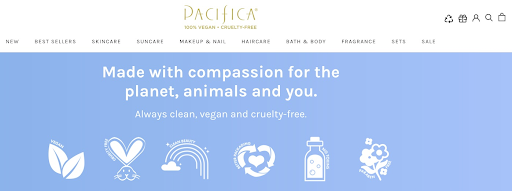
Customers see these values reinforced in Pacifica’s natural ingredients and packaging made with post-consumer recycled materials. Customers feel good shopping the brand and recommending it to others to help clean up traditional beauty standards.
Plus, Pacifica breeds loyalty by encouraging customers to give their empties “a second (or third) life” with their recycling program. Customers earn points to return and spend on more Pacifica products (and encourage more feel-good vibes).
4. Fossil
During the COVID-19 pandemic, watch and leather accessory brand Fossil realized customers couldn’t hang at the mall and shop their products as usual. So the company initiated Virtual Personal Shopping experiences.
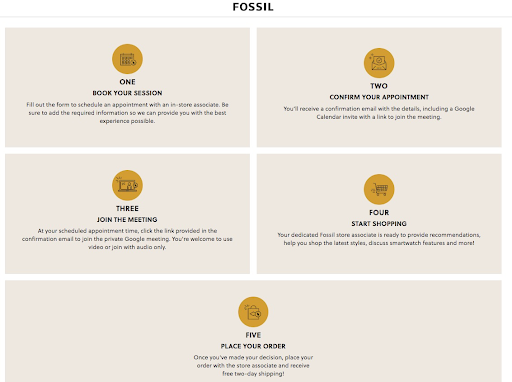
Customers can easily and quickly schedule an appointment with a knowledgeable Sales Rep who will try on watches and handbags, dish new arrivals, and answer all their questions right from their virtual call. Customers can then place an order and receive free 2-day shipping to boot!
This told customers that Fossil not only valued their safety but their time. And they made each aspect of their “new normal” customer journey personalized and enjoyable.
5. UPS
The global shipper and logistics experts in brown know how to prioritize speed and efficiency for their customers. Once visitors land on their homepage, UPS gives them the five most popular routes on their customer journey map.
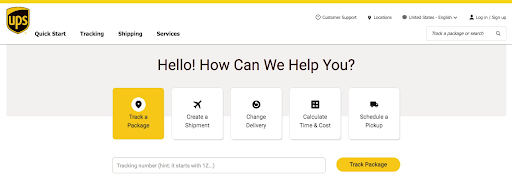
Visitors don’t need to scroll around the page to zero in on what they’re looking for. That’s how you prioritize speed and convenience, and their happy welcome greeting covers friendly service, too.
The final word on why customer experience matters
Make no mistake, customer experience will be the deciding factor for brands moving forward. So it’s up to your company to brainstorm ways to deliver a personalized, human touch that cuts through the noise and connects with your target audience.
Each aspect of your customer journey should speak to them and their needs, inspire brand loyalty, and foster genuine relationships.
But meeting your customers’ expectations takes knowing them inside and out. It also requires a responsive team to be there when a customer has a question or issue. So you’ll want to invest in customer engagement and unified customer service tools to be there every step of the way. Then, you’ll truly elevate your CX to great heights.

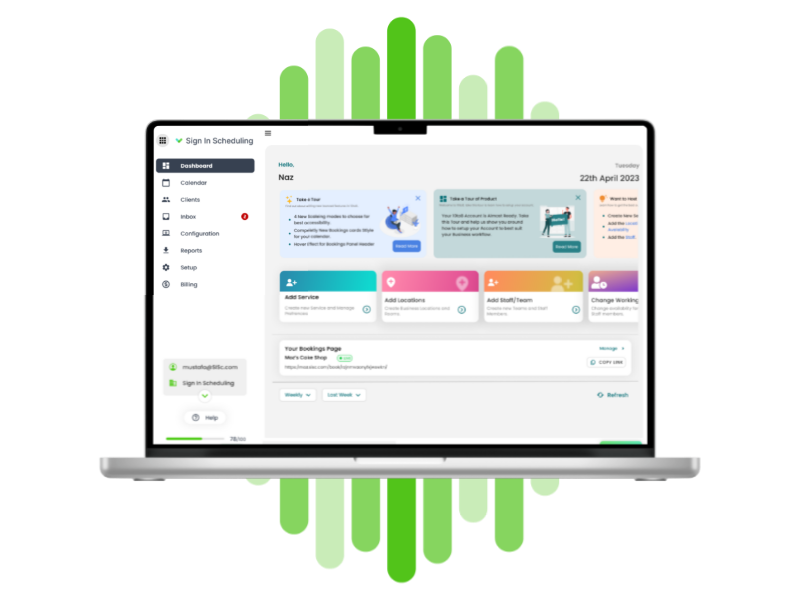




Blog comments